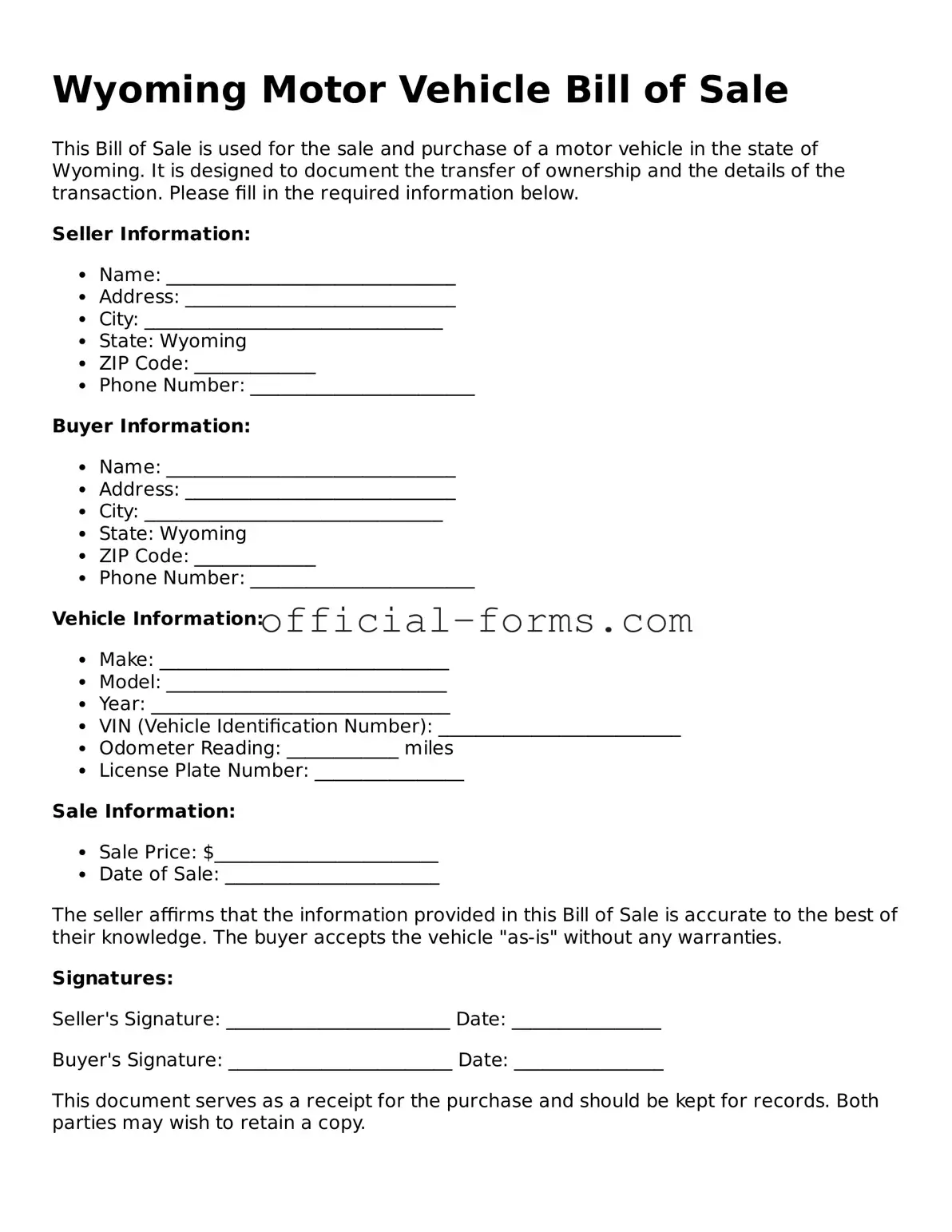Official Wyoming Motor Vehicle Bill of Sale Document
The Wyoming Motor Vehicle Bill of Sale is a legal document that records the transfer of ownership of a motor vehicle from one party to another. This form serves as proof of the transaction and includes essential details about the vehicle and the parties involved. Understanding its importance can help ensure a smooth and lawful transfer process.
Open My Motor Vehicle Bill of Sale Now
